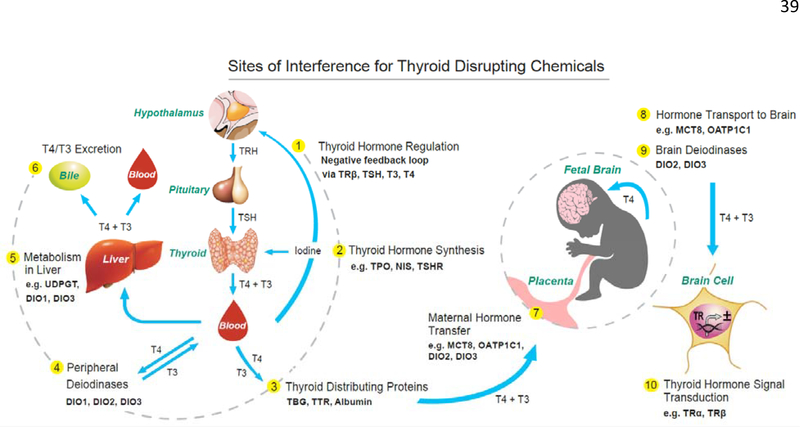Figure 1.
Sites of potential chemical interference of the thyroid system of the mother and fetus are denoted 1 through 10 (yellow circles), and range from interaction with central regulation of the HPT axis (1), thyroid gland function (2), hormone distribution (3), metabolism (4–6), tissue concentrations (4 and 7–9), and cellular action (10). The concentrations of THs in peripheral tissues are mediated by TH transporters (not shown) and deiodinating enzymes in all tissues. TH transporters also regulate the transfer of THs from the mother to the fetus via the placenta (7), and transporters in blood-brain and blood-cerebrospinal fluid brain barriers control the uptake of T4 and/or T3 into the developing brain tissue (8). The concentrations of brain THs is further controlled by deiodinase enzymes (9). The primary action of THs in cells is to control gene transcription through activation of nuclear receptors (10); however, it is now known that other mechanisms of cell signaling exist (229). Environmental contaminants have the potential to disrupt several of these sites in the mother, fetus, and the child.
Adapted from Gilbert et al., Developmental thyroid hormone disruption: prevalence, environmental contaminants and neurodevelopmental consequences.
Neurotoxicology. 2012;33(4):842–852, with permission from Elsevier (230).

